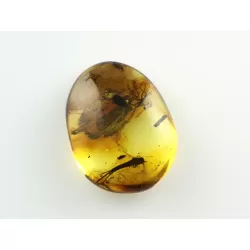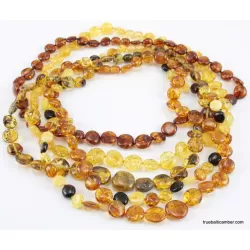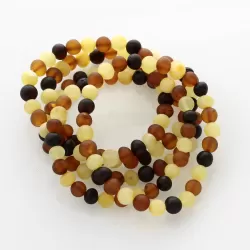
Baltic Amber Colors

Baltic amber, a fossilized tree resin found in the Baltic region, comes in a variety of colors, ranging from pale yellows and oranges to deeper reds and browns. The specific color of Baltic amber can depend on factors such as the type of tree that produced the resin and the conditions under which it fossilized. Here are some common colors of Baltic amber:
-
Honey: This is the most common color of Baltic amber, ranging from pale yellow to rich golden hues. It often features a warm and translucent appearance.
-
Cognac: Similar to the color of cognac or brandy, this shade of Baltic amber is a deeper, reddish-brown tone. It can have beautiful variations in color and translucency.
-
Cherry: Cherry amber is characterized by its deep red color, resembling the ripe fruit it's named after. It's a rare and sought-after color.
-
Green: Green Baltic amber can vary in shades from light and milky green to darker, more translucent green. The green coloration is often caused by the presence of plant material in the resin.
-
Butterscotch: This color is a mix of warm yellow and orange tones, resembling the color of butterscotch candies. It's a popular and attractive shade of Baltic amber.
-
Black: Black Baltic amber is quite rare and is characterized by its dark, almost opaque appearance. It can have undertones of brown or red.
-
White/Milky: White or milky amber is not as common as the other colors. It has a pale, cloudy appearance due to microscopic air bubbles trapped in the resin during fossilization.
-
Blue: Blue amber is exceptionally rare and highly valued. It exhibits a bluish glow when exposed to ultraviolet light. The blue color is thought to be due to fluorescence caused by certain compounds present in the resin.
It's important to note that amber colors can sometimes be enhanced or altered through treatments like heat or oiling. Natural variations in color, transparency, and inclusions are part of what makes each piece of Baltic amber unique and valuable to collectors, jewelers, and enthusiasts.












